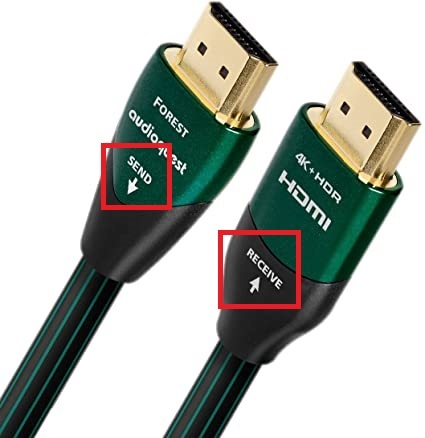Table of Contents
Why you need this article
The terms 'Active' and 'Passive' are thrown around from time to time regarding cables and equipment. What does it mean? Which is better? Which do you actually need? This article will discuss the differences and provide some advice.
Passive cables and adapters
When a product is described as passive it means the product simply uses wires alone to send a signal from one device to another. For example, the majority of ordinary cables are passive because they are just two connectors joined with various types of wiring.
Passive Cables, Adapters and Switches have a huge advantage when working with content-protected source devices (ie: HDCP, Macrovision). Because there is only copper wire between the source and display, your signal is never processed by hardware or software which could potentially adjust or strip important data from the stream.
Because Passive products don’t require any extra power, there is no standby usage or requirement for a mains wall socket. They’re simply plug and play, and your AV hardware won’t even know it's there.
The primary drawback is quality. Passive cables are liable to degrade the data they carry, due to "channel impairments" including attenuation, crosstalk and group velocity distortion. Generally this only happens when travelling over long distances.
Active cables and adapters
An active product is one that contains a form of electronics inside it. For example, most converters are active because they contain what’s known as a chipset that is actively looking at the signal it receives and then converting it to another format. An HDMI to DisplayPort Converter would be an example of an active product.
Active cables work well when operating over very long distances. While they occasionally require power from an external source, they have the ability to boost your AV signals over longer distances. This can be important when working with low power devices, as they may not have the output strength to support, for example, a 20m HDMI cable on their own.
Finally, Active products are generally more powerful, which means splitters can power 2, 4, 8 and more screens at once while maintaining maximum audiovisual fidelity (passive devices are generally limited to a single screen).
A chipset is just another term to describe an electronic circuit, sometimes known as a controller. In the AV world a chipset is usually used to control the signals sent between devices
Which one should I get?
This can be a tough decision, and there are so many options that trying to find an active version of a passive product and vice-versa can be challenging. The first step is to investigate what your requirements are in terms of content/copy protection, video resolution, cable length, and power availability. Then, compare those needs to the specifications on the product.
While the vast majority of cables are passive, some do feature one or more chipsets and are designated as 'Active Cables'. These chipsets boost the signal passing through the cable to help transmit data over longer distances. Sometimes active cables will also use fiber optic technology to send the signal over both copper wire and light to reach incredible distances in the hundreds of feet!
Active cables which convert a signal typically only work in one direction (see above), whereas passive cables are bi-directional, which is neat.
Generally, we recommend trying the shortest passive cable length you can get away with. Bandwidth loss over long cables can result in lowered resolution capabilities but usually doesn't occur until 60+ft.
Conclusion
There is a tremendous amount of confusion surrounding 'Active' and 'Passive' cable designs but generally speaking, unless you are transmitting over extended distances or have a specific use case that requires Active, then Passive is the right format for you. Active cables play an important role in enterprise and storage applications due to the confined space and air-flow requirements in data centers and long reaches (up to 30 meters) required to make some of the rack-to-rack connections.
For most users, a Passive cable will provide the flexibility, function, reliability, and resolution needed for day to day use. Because Passive cables run either direction, they are far simpler to use and understand as well which makes them the simpler choice at least.
Hopefully you found this article useful and informative. As always, don't hesitate to reach out to the Puget Systems Support department with any questions.
Need help with your Puget Systems PC?
If something is wrong with your Puget Systems PC, we are readily accessible, and our support team comes from a wide range of technological backgrounds to better assist you!
Looking for more support guides?
If you are looking for a solution to a problem you are having with your PC, we also have a number of other support guides that may be able to assist you with other issues.
